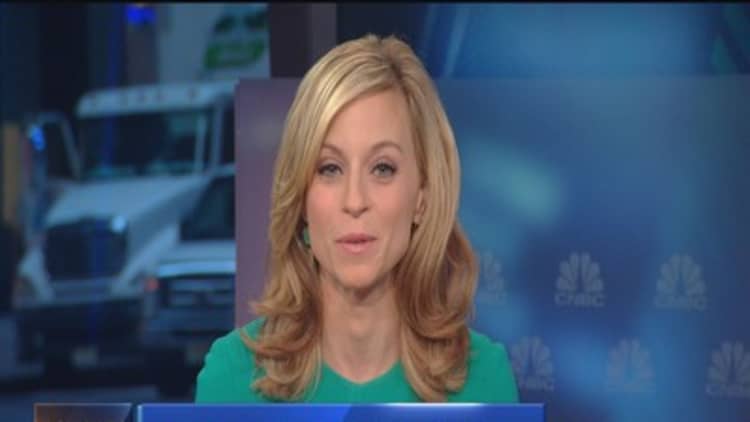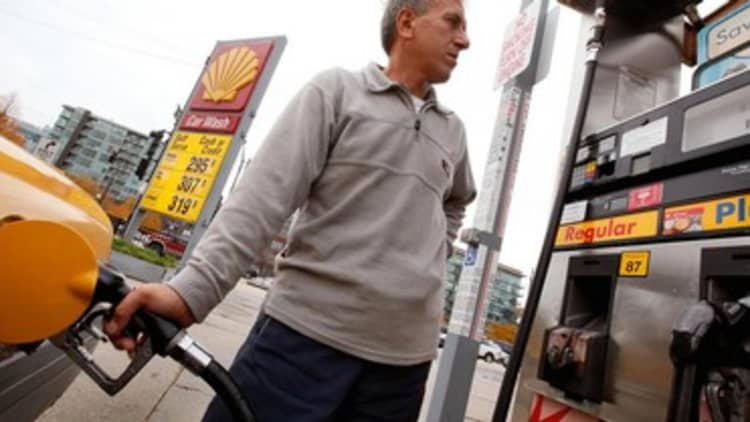
Americans are spending again, but what they are spending their money on has permanently changed since the Great Recession, and that's raised the bar for retailers confronting this new reality.
The permanent wealth loss suffered in 2008, along with the shock of major American companies seemingly going bust overnight, did a number on our sense of what can be taken away, said Sarah Quinlan, MasterCard senior vice president and head of Market Insights.
"We value a sense of what's permanent, what we can take with us: memories," Quinlan said.
That's having a profound effect on where people are choosing to spend their money and on the retailers that are performing well.
Speaking to CNBC last week, Macy's CEO Terry Lundgren said consumer spending "is in automobiles, it's in housing, it's in health care, it's in certain apps that they are downloading, and they are going to get back to our categories, but they certainly weren't there to the degree we expected them to be this last quarter."
As a department store, Macy's and its peers are facing some of the toughest headwinds. Consumer spending at department stores has fallen 7.7 percent since July 2011, according to MasterCard SpendingPulse. At the same time, consumers are putting a higher value on spending their discretionary dollars on experiences, and less on items like clothing.
Ten years ago, more than 3.5 percent of total consumer spending went toward clothing, according to government data. But spending in the category has posted the biggest basis point decline over the past decade.
It's not that consumers aren't buying any clothing; but with relaxed workplace dress codes, priorities and styles have changed.
"One wardrobe is all that person needs," Quinlan said. "We can carry our weekday wardrobe now into the weekend, and thus that's why we've obviously seen an increase in 'athleisure' type of apparel purchases."
Shoppers also buy less frequently, according to Quinlan.
"We actually really see spending twice a year. We see it in October for the winter, and we see it in April for the summer and we put a sweater on in between," she said.
But during an earnings conference call Thursday, Gap CEO Art Peck suggested it's on the retailer to win those consumer dollars.
"From where I sit, across all of our businesses, our job is to deliver regardless of the noise that's out there today and what I see is a consumer who has confidence, I see dollars being spent and I see an opportunity for us to continue to get more than our fair share as I look forward and I am very optimistic," he said.
Shopping local
Small businesses are benefiting from new consumer attitudes.
"The consumer wants that unique, curated, special experience that's just for her, so she's willing to actually pay more for it by shopping at a small business," Quinlan said.
For the last 14 months, total retail spending in small businesses—that is businesses with $50 million or less in retail sales—has actually outgrown total retail sales in this country, according to MasterCard SpendingPulse.
Leisure travel, dining out, and attending events are among the other categories that are seeing increased spending.
According to the U.S. Travel Association, Americans are forecast to spend $802 billion this year on leisure travel. Since 2011, spending on travel has risen 14.5 percent, according to SpendingPulse.
Airlines also are more profitable than ever, and the rising demand for lodging has helped propel start-ups like Airbnb and HomeAway compete for market share against large hotel chains.
Perhaps the most stark increase in spending has been in the restaurant sector. Sales at restaurants open at least a year have fairly consistently outperformed retail same-store sales, according to Thomson Reuters.
A number of restaurant companies went public in recent quarters, reaping the benefits of both consumer dollars and investor support. Shares of Shake Shack have gained about 150 percent since its IPO in January and BoJangles stock is up 11 percent in its first three months as a public company.
Both increased travel and dining out could actually help retail sales, said Quinlan.
"The key thing that we see is people go out and they dine first and then potentially they'll go shopping after," further explaining "what we're really showing is there is a preference for wanting to be with our family and friends and enjoying being together."
Plus, Quinlan said, vacation affords consumers what is most lacking in their lives: time. That time is often spent shopping. The U.S. Travel Association said shopping is the No. 2 leisure activity for U.S. travelers.
Over the past decade, government spending data also show an uptick in recreation services, which includes membership clubs, sports centers, theaters and museums. Within the category only motion picture spending has fallen, which explains the shift to viewing movies and other similar content through streaming services at home.
According to Nielsen, two in five American households, or 40 percent, subscribe to a video streaming service like Netflix, Hulu and Amazon.
Consumers are enjoying their video-on-demand on high-definition televisions in the comfort of their homes, with spending on both electronics and on the home increasing over the past decade.
Home is where the spending is
The home is the biggest asset for many American consumers, but making improvements and upgrades is often a costly endeavor. The housing downturn that was a large part of the recession caused a subsequent pullback in that area of spending, but the tide has been turning.
"The improvement in the housing market has increased home values, so consumers are investing in their homes through decoration and renovation," said Jharonne Martis, Thomson Reuters director of consumer research.

A Thomson Reuters report showed sales in home improvement and home furnishings has outperformed retail sales since the first quarter of 2013, with home furnishings spiking in early 2010 and home improvement spiking in 2013.
MasterCard SpendingPulse said furniture and furnishings sales have grown 16.5 percent from July 2011, and hardware has grown more than 24 percent in the same time period.
"While 2015 consensus U.S. GDP growth projections are moderate, housing data remains supportive of the continued growth in home improvement industry," said Home Depot CEO Craig Menear on the retailer's second-quarter earnings call.
The home improvement retailer is among the beneficiaries of the shift to home-related spending, with both it and rival Lowe's largely outperforming the broader retail sector's comparable sales growth for several quarters.
Even at department stores, home is a category that has seen strength. Macy's called out strong sales of furniture and mattresses as a bright spot, while J.C. Penney counted "home" among its most recent quarter's top-performing categories.
Higher bills
While homeowners are putting money into home improvements, renters are shelling out more each month for their landlords. Rents climbed an average of 15 percent across the U.S. from 2009 to 2014, according to the National Association of Realtors. Real estate data firm Reis said the gains in the latest quarter rose by the strongest rate in three years.
There are other bills that consumers are budgeting more money toward, whether they want to or not. Government data reported upticks in spending over the past decade in medical bills, education, and some home utilities.
Then there are auto sales. After years of hanging onto the same vehicles, consumers are finally buying again, which is a potentially positive sign.
All in all, Quinlan said, it comes down to how much "value" consumers see in each purchase they make.
"Value is not the cheapest price," she said. "Value is what will someone pay to receive the good, the service, whatever they're purchasing."
And that seems to be the lasting mark the Great Recession made.
—CNBC's Sabrina Korber contributed to this report.
(UPDATED: This story was updated to include comments from Gap's CEO.)







